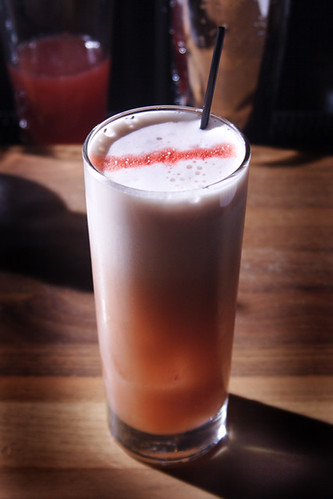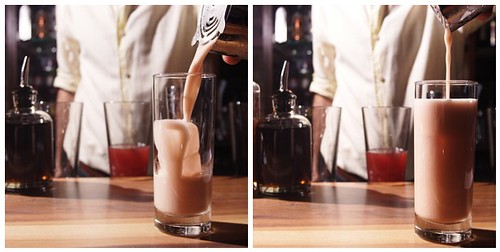
For the most part, I think Rachel Maddow is a great ambassador for cocktail culture -- especially home bartending, and I don't want to take a true lover of cocktails to task over seemingly minute details. But aren't 'the minute details' what cocktail culture is all about? Listening to this podcast from
The Sporkful, I found myself with a few bones to pick...
In response to a question about when it's appropriate to eat the garnish in your cocktail, Maddow said:
You're never supposed to eat the garnish. It is there to modify the liquor in the glass, not to provide you with a tasty treat.
While I agree that you shouldn't eat a waxy, bleached "cherry" that's been sitting out on a bar all night, a Marasca cherry is absolutely meant to be eaten. At the bottom of a Manhattan, that special little fruit is a reward for finishing the cocktail and it's full of boozy flavor. I feel the same way about other garnishes, as well. A tiny bite from the piece of crystallized ginger on the Penicillin (a
Milk & Honey cocktail by Sam Ross), or
the Whistler's Diablo, will make the drink a little spicier, if desired. I'm not saying that eating the orange rind in your Old Fashioned will be too pleasurable, nor the lemon twist in your French 75, but I don't agree that the the olive in a Martini is there to simply "modify the liquor."
Citrus garnish - express the oil onto the surface of a drink. You don't even need to put it in the drink. The long, curly-cues of lemon are pretty but not functional.
Totally true. Most of the time you should discard the citrus peel once the oil has been expressed. However, while I don't prefer it, I don't mind if a bartender leaves the lemon peel in my Sazerac.
In a gin and tonic, squeezing the lime wheel into the cocktail is the worst. The drink should be mixed properly and the wedge should be for visual appeal only. If you want more lime juice, you should have the bartender remake your drink with more lime juice. The wedge is not to recalibrate your cocktail.
First of all, there is no lime juice in a gin and tonic. It is served as a "side" in the form of a wedge, so the customer can decide if they want lime juice in the gin and tonic at all.
She's got it right when it comes to garnishing tools; her recommendation of using a potato peeler to procure a nice lemon rind, and a channel knife to carve a perfect "pig tail," are spot on.


















